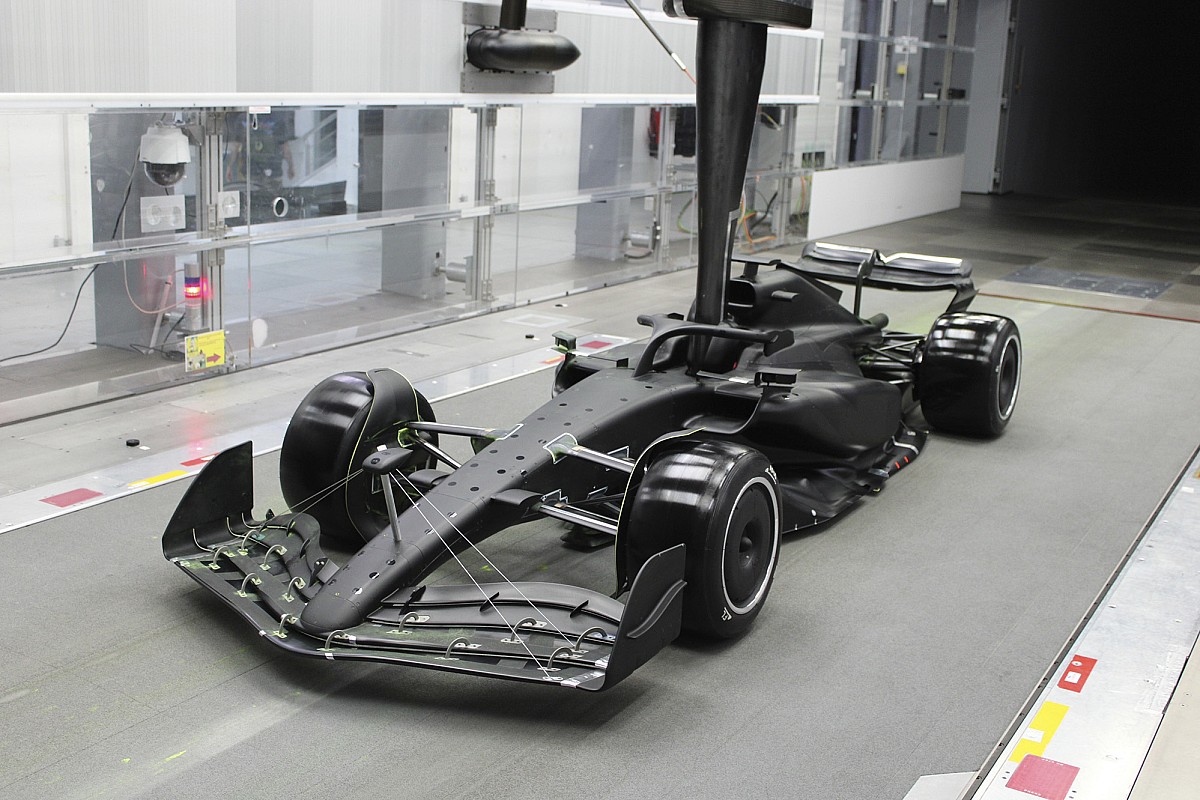It would be illogical for the American team to abandon its project before 2028, considering the possibility of a reprieve. The recent revelation of images showcasing its wind tunnel model highlighted the significant strides made in pursuing its F1 aspirations.
The design of the sidepods and other intricate elements in the car’s design inevitably draws comparisons with Red Bull. This resemblance is particularly evident in the sidepod design and the success of the RB19, which influenced several teams on the grid last year.
Some teams took inspiration from Red Bull’s design, with McLaren incorporating an inlet design similar to the RB19 in its iterations throughout 2023. Red Bull, on the other hand, continued to develop and refine this area of the car during the season, aiming to enhance aerodynamics.

For a more accurate comparison, looking at Red Bull’s RB18 makes sense due to its closer representation of the Andretti design, including the inlet and wing mirror design. The floor edge detail also shares similarities, as seen in the segmented and rolled floor’s edge, similar to the RB18.
The presented image lacks a comprehensive view of the floor’s leading edge and its fence arrangement, crucial aspects under the new regulations. However, a bib wing arrangement beneath the chassis is visible, contributing to the aerodynamics of that region.
The engine cover design differs notably from Red Bull’s, featuring distinctions in the roll hoop, airbox shape, and a wider spine section. Possible reasons for these differences include accommodating a Renault customer power unit or creating additional space for enhanced cooling.
The separation between the engine cover and sidepod bodywork, resembling a shelf-like structure, has become a common feature among teams, aiding in cooling internal components. The shorter shark fin and elongated spine outlet at the rear of the engine cover are recurring themes in teams’ efforts to balance cooling and aerodynamics.
Examining the front of the car reveals further similarities with Red Bull, as the Andretti design incorporates pull rod front suspension, reminiscent of the RB19. Notably, McLaren also adopted a pull rod suspension layout since the regulations changed in 2022.
The front wing and nose exhibit influences from various teams, with a distinctive feature being the slot gap separator brackets connecting the upper two elements.
In contrast to conventional horseshoe-style brackets, these brackets play a role in creating outwash, a design aspect also seen in Mercedes’ 2022 front wing and later adopted by Ferrari and Haas in 2023.
The Andretti rear wing shares a feature seen before, resembling one of Aston Martin’s open-end style wingtip variants at the Monaco Grand Prix, also observed in Alpine’s design.
The grid’s inclination toward the Alpine solution is evident, but Ferrari and Mercedes introduced their versions at the Belgian and Dutch Grand Prix, respectively, aiming for a more efficient overall rear wing design beyond the original regulations’ scope.
